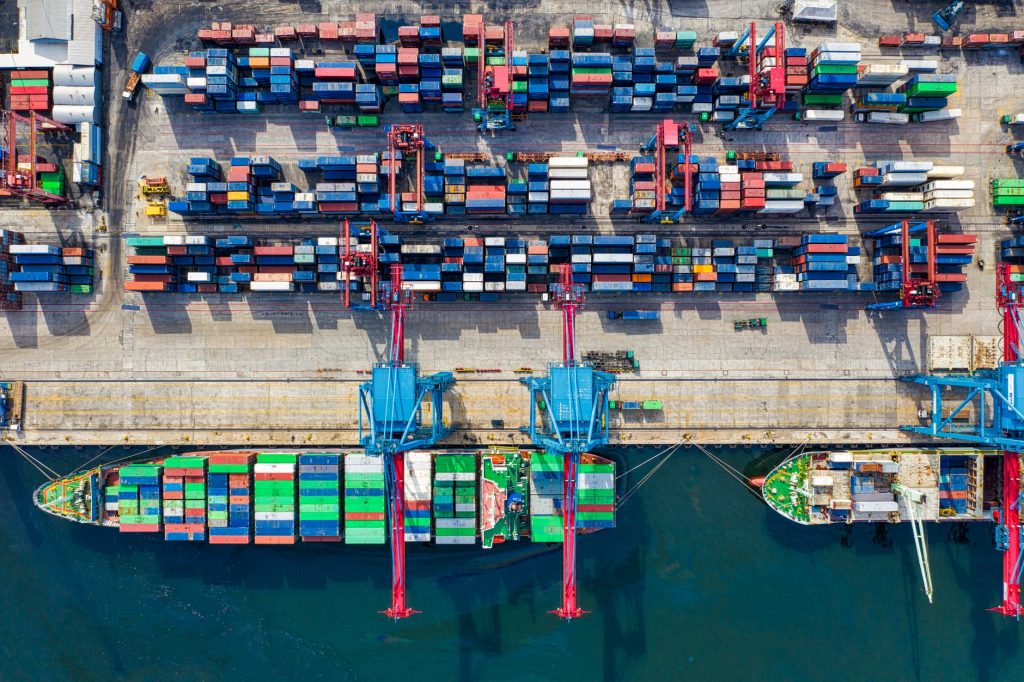Digitisation answers the quest for risk mitigation in global trade
Digitisation should be high on the agenda in cross-border trade transactions as banks and corporates seek to minimise their exposure to multiple risks.
Increased fraud, the continuing effects of the pandemic, Brexit and trade friction with China have all made trade riskier. Even before COVID-19 struck, a handful of well-known banks started to withdraw from financing oil and gas transactions because of the operational risk and losses they incurred.
The eruption of COVID-19 continues to cause major disruption, opening up opportunities for fraud that have prompted warnings from the US Attorney General, US security agencies and Interpol. Tech giant IBM also highlighted how the current atmosphere lends itself to fraud as behaviour becomes less rational.

These concerns have been heightened by a series of fraud allegations relating to commodity transactions.
These concerns have been heightened by a series of fraud allegations relating to commodity transactions. The Hontop Energy (Singapore) Pte and Agritrade International cases reportedly inflicted losses of more than $9 billion on global lenders, while the effects of the current high-profile Hin Leong oil trading case in Singapore, are still being worked out.
For organisations engaged in international trade, the closure of offices during anti-coronavirus lockdowns in many areas of the globe has added hugely to risk, exposing the vulnerability of paper-based trade finance processes. Banks had many different business continuity scenarios, but none in which nearly all their staff would have to work out of office for long periods of the year. This meant corporates were confronted with their paper documents being stuck with couriers, postal services and yes, even banks.
Although we now see the fragility of paper processes, the susceptibility has always been evident. The fraud alleged in the Agritrade case involved duplicate bills of lading, for example. The Hin Leong case, meanwhile, hinges on allegedly fraudulent use of 58 import letters of credit, as well as bank statements, bills of lading, sales contracts and invoices. Letters of indemnity are also said to have been used instead of bills of lading because the original bills were unavailable.
The vulnerabilities of paper trade documentation exposed in these cases has been greatly amplified by the virus outbreak. Presenting key paper documents such as bills of lading under letters of credit to comply with the terms of their issue is extremely difficult when ports are deserted and bank staff work from home. As paper documents disappear in couriers’ networks, delays in their delivery and processing become even greater, disrupting business continuity and increasing the opportunities for fraud.
Disruptions to business continuity have not only impacted the use of payment instruments such as letters of credit, but also frustrated the processes used for bank guarantees. Corporates have had to fall back on the use of insecure and unstructured email processes between their banks and counterparties when handling guarantees. This is an area where direct communication to multiple banks under a single digital platform would clearly add value for corporates, giving them a secure interface without the vulnerabilities of paper.
Continuing uncertainty makes the caution of banks understandable, but it does not help their corporate clients if they just pull back. It makes it much harder for any type of company to conduct and finance cross-border transactions.
Digitisation resolves the business continuity and security challenges in trade
This all makes the strongest case possible for the digitisation of trade. From a business continuity perspective, digitisation makes physical barriers or restrictions irrelevant. Applications for trade finance, including letters of credit, standby letters of credit and guarantees can be submitted safely from any location including someone’s home, with approval given remotely by all parties. The immediate digital transfer of documents is fast and secure.
Instead of delays and missing paper documents, the use of a reputable digitisation platform for such transactions gives banks and corporates a secure line of communication, with each party knowing who, what, where and how the document or message was sent. This introduces new levels of trust and reassurance. All parties benefit from traceability and have an organised view of instruments and reporting. In-built levels of authorisation to approve and send messages and the removal of easily-forged paper hugely reduces the risk of fraud and makes it ten times harder for false documents to slip through.
Encryption ensures security, while electronic audit trails provide constant visibility of documents to counterparties. Secure digital transmission removes the costly delays of couriering and is far safer and better-organised than emails. Certain bilateral agreements and rule books may also be put in place, having legally enforceable protocols to ensure the correct global use of such digital platforms, again substantially reducing risk. Questions of ownership in relation to electronic bills of lading (eBLs) are resolved because ownership is conferred by a dedicated eBL title registry, requiring layers of approval.
Multi-banking trade finance solutions increase comfort
While reducing fraud risk, digitisation also injects far greater comfort into the relationships between corporates and banks. Although some big-name banks have withdrawn from commodity finance, there are still plenty of options for corporates, satisfying the changed appetite for risk mitigation.
Multi-bank trade finance solutions are great facilitators in these relationships, reducing levels of anxiety since they have established rule-based networks that make it easier for corporate treasuries to conduct and monitor their transaction.
Once companies have signed up and provided the necessary level of authentication, they can solidify relationships with banks and use a single solution to monitor and optimise credit lines, letters of credit and guarantees.
As corporates finance and conduct transactions on the solution, they reap the benefits of time and efficiency, while banks know and trust the origins of the transactions and electronic documents they are required to process, speeding up approvals.
Digitisation cannot eradicate fraud, nor will it eliminate trade friction. Yet the case for digitisation could hardly be stronger in the current uncertainty when the pandemic is still playing out, Brexit threatens confusion and companies involved in commodity transactions focus on their core business while still requiring financing and risk mitigation.
If global trade is to spring back from the pandemic and address longer-term difficulties in the availability of trade finance, paper needs to be removed its processes as the start of a rapid shift to digitisation and multi-banking trade finance solutions.











































